Knowing Meghalaya's bid for UNESCO World Heritage Site
09 Apr 2022 17:31:54
In the last article of this series, we'll try to understand Meghalaya's Jingkieng Jri that are found all around the state of Meghalaya. The Jingkieng Jri is one of the three Indian heritage sites from Maharashtra, Andhra Pradesh and Meghalaya which have been counted in the UNESCO tentative list. The total of Indian sites in the UNESCO tentative list reached 49, with the three being an addition to the earlier 46 sites.
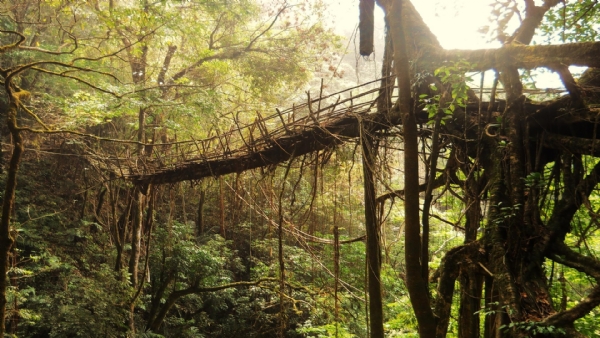
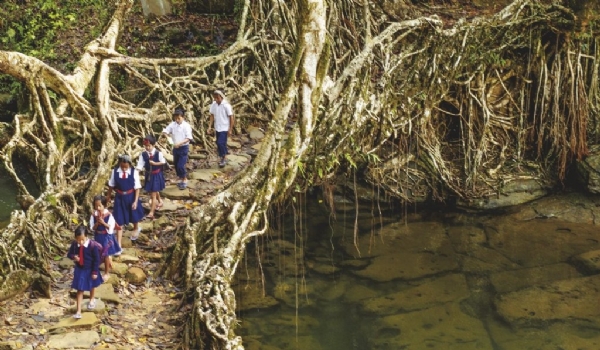
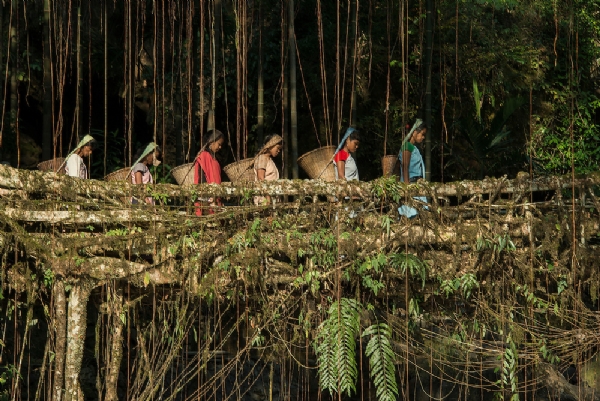
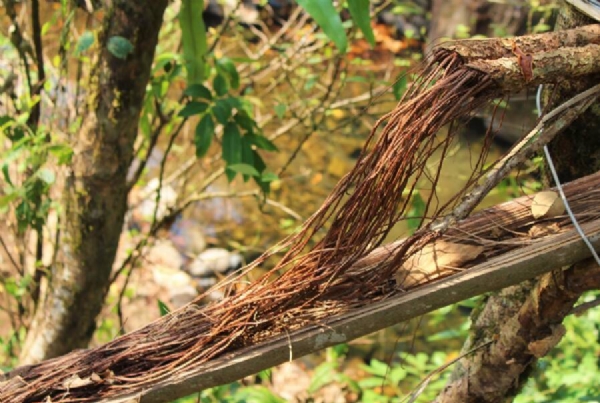
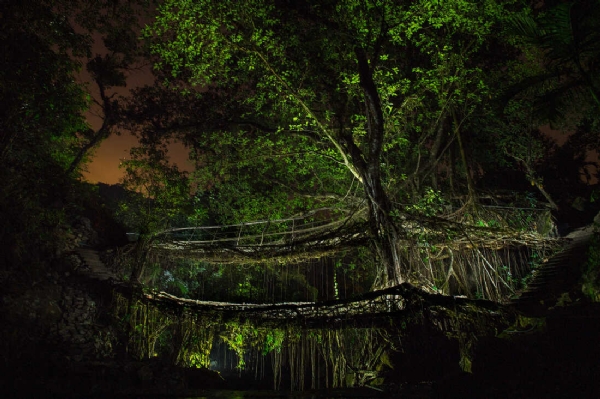 -- The article is based on information provided by UNESCO
-- The article is based on information provided by UNESCO

Locally known as Jingkieng Jri, the Living Root Bridges of Meghalaya are Ficus-based rural connectivity and livelihood solutions within dense subtropical moist broadleaf forest eco-region of Meghalaya, in the eastern extension of the Indian Peninsular Plateau. Grown by indigenous Khasi tribal communities, these structural ecosystems have performed in extreme climatic conditions for centuries, and encapsulate a profound harmony between humans and nature.
Historic reference of the bridges
Early 19th century published accounts of the Living Bridges confirm an exceptional tradition of India rubber tree-based bridge construction near Cherrapunji. Validating their increasing strength and ingenious use of root inosculation, these records highlight important engineering and botanical attributes, which contribute to overall structural robustness. Though the terminology of ‘Living Bridges’ focuses on bridge morphology, recent studies have revealed significant diversity including ladders, platforms, towers, steps and erosion or landslide prevention structures.
Socio-economic and Spiritual significance of Jingkieng Jri
Each Living structure or Jingkieng Jri constitutes a unique site-specific response, where form and function have evolved through sustained human interaction with environment. Functionally, each category plays a distinct role; bridges, ladders and steps provide a reliable mode of transport especially during monsoon season; platforms and towers provide an opportunity for recreation and security; erosion and landslide prevention structures facilitate slope protection and soil stabilization. In addition to load-bearing structural use, India rubber trees have also been used for extracting caoutchouc (latex) for waterproofing and hunting, validating their special significance in Meghalaya.

Besides playing a critical socio-economic role within each village, Ficus-based Living structures also contribute to the ecology through forest and riparian restoration. The indigenous community, including traditional farmers and hunters, continue to use and nurture these structures, reinforcing the remarkable spirit of their ancestors.
Environmental uniqueness of the bridges in relation to humans
Each 'Living Root' structure reveals a distinct ethno-botanical journey rooted in profound culture - nature reciprocity and synthesis. The intergenerational growth process of nurturing a sapling into a robust load-bearing structure in extreme climate and geography reveals exceptional enterprise and skill, suggesting a masterpiece of human creative genius.
Continued growth and use of Living Root Bridge across more than 75 villages prone to extreme rainfall related disaster events reveals a critical survival practice, which has evolved through deep immersion and experimentation in a remote and distinctive environment. The techniques and morphologies developed through a shared culture-nature journey suggest an apogee of human-plant relationship, indicating a remarkable breakthrough in nature-based design and engineering.
Khasi traditional connection of Jingkieng Jri

Embedded in an ancient way of life, the Living Roots Bridge converge insights from a range of fields including - vernacular architecture and engineering; traditional craft and farming; native flora and fauna; soil, water and forest conservation; climate response and climate change resilience. Distinctive Khasi systems including laws of inheritance and succession, laws of consanguinity and kinship, traditional land and forest classification, and village dorbor-based governance, have also shaped the overall context. Together, these practices exemplify profound acuity and wisdom of the community.
Rooted in a collective tribal identity and a spirit of cooperation, the practice of Living Roots Bridge has been nurtured by ancient Khasi belief, moral code of conduct, and rules of etiquette, which highlight the importance of righteous thought and action for collective well-being. Various indigenous stories, songs and practices celebrate a unified vision of reality - where God, nature and humans are an indivisible whole. In addition to Living Roots Bridge, this vision is reflected in other indigenous practices including various forms of nature worship, preservation of sacred groves, and belief in an abode of spirits.
Jinkieng Jri for Humanity

With an inclusive growth process across multiple generations, progressive increase in strength and performance, high robustness and longevity in extreme conditions, remedial impact on surrounding soil, water and forest, support for flora and fauna, and keystone role of Ficus plant species in local ecology, LRB reveal an important milestone in the evolution of living plant-based construction. As an evolving research domain, Jingkieng Jri have become global icons for sustainability and can play a pivotal role for realizing an equitable vision for humanity.
Created through profound ingenuity and tenacity of the indigenous Khasi community, Living Root Bridges represent the pinnacle of human-plant interaction. As critical rural connectivity solutions in extreme environment, these community-based structures have withstood extreme rainfall related disaster events for centuries, and represent a breakthrough in nature-based engineering, specifically bridge design and construction. The intergenerational growth process of nurturing a sapling into a robust load-bearing structure reveals unparalleled culture-nature convergence in a continually evolving cultural landscape - blending physical, social, political, economic, technological and spiritual links.

Reflecting a vital attribute of Khasi society, the Living Roots Bridges embody a harmonious relationship between humans and the environment, and uphold natures’ wholeness and indivisibility. As per indigenous belief, only an elder, who has no children, can plant the Ficus sapling for a Living Root Bridge. Interpreted as a profound act of giving and merging with ‘mother nature’ (meiramew in Khasi language), this ancient faith is an extension of profound Khasi kinship with nature and indigenous code of conduct, which highlights the importance of righteousness in thought and action for collective well-being. As the young Ficus sapling is collectively nurtured, and as each root is sensitively guided and intertwined over centuries, a profound phenomenon unfolds and emphasizes the fundamental essence of life; 'unity'.
